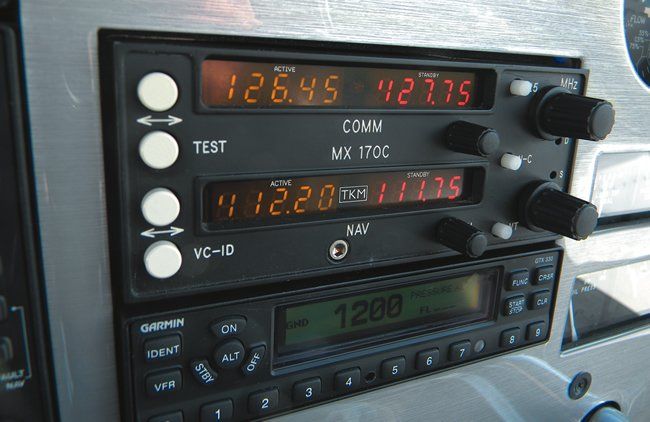There are seemingly more signs of stability in the avionics market with Scottsdale, Arizona-based TKM/Michel Avionics under new leadership. It says it has an improved product line and is currently planning the next generation of slide-in replacement navcomms, while it ratchets up support for existing units in service-roughly 37,000 radios.

Recall that TKM dominated a niche market with its MX-series slide-in replacement navcomm radios. Compared to old mechanically tuned radios like the King KX170, Narco Com11 and Cessna 300, the MX rigs had appeal, sporting digital tuning and frequency flip-flop transfer. Better yet, shops didnt have to tear the radio stack apart to rewire the connectors and change the mounting hardware. Thats an MX170C in the main photo. It plays with the venerable King KX170B wiring harness and mounting tray, while a quick-release camlock has it installed in seconds.
As popular as the radio was in its prime, an unsupportive shop network and a nonexistent marketing program made TKM go silent. Although factory repair never went away, it just came with long lead times, yet reasonable repair costs, from my experience. But the TKM line wasnt perfect, either.
When I was the avionics editor of Aviation Consumer and a tech in the 1990s (the heyday of the TKM line), I didnt recommend slide-in radios as a cure-all. In many cases, it was the existing wiring and antennas that needed replacement and not the radio. Even the mounting hardware could be compromised. I once got a MX radio wedged in a broken Cessna mounting rack, which had to be cut to free the radio. On the bench, the MX radios were easily outperformed by Kings KX155, Narcos MK12D and even Cessnas 28-volt RT385/485-series radios.
Still, Ken Beckemeyer, TKMs new president and CEO, thinks the underserved lower end of the avionics market will benefit from the revived MX line, even though the product is physically unchanged and with the same features from the early 1990s. TKM said it made some improvements to the receiver and transmitter circuitry, improving the audio quality. But I think even lower-end buyers will demand more gee-whiz appeal than the current line delivers.
As Beckemeyer attempts to solidify the current product line and step repair support up to a higher level (TKM turns around an average of 80 radio repairs per month), hes put the brakes on designing the next-generation TKM slide-in until he surveys the market to understand what additional features lower-end buyers are looking for. He also understands the rigors, challenges and delays that tag along with FAA certification. Beckemeyer spent years at the helm of AmSafe-the company that pioneered the STCd airbag seatbelt.
If Im reading the market correctly, there are still a lot of aircraft owners that just fly on Saturday mornings. When they get in the aircraft and their old radio doesnt work, theyve got a problem that we can solve. Ive sensed a lot of frustration from buyers because larger manufacturers-and high prices-have dominated the market for so long, Beckemeyer told me.
As we report in the budget IFR avionics article on page 8 of this issue, $15,000 is likely the starting point for basic retrofits. That wont get you much when you factor in the extra costs that tag along with a full teardown upgrade. Beckemeyer believes that the average slide-and-fly radio buyer will tolerate a price point of $2500 per radio. While he plans on releasing a slide-in radio for the King KX155 navcomm, its unlikely that it will have advanced features that I think the market is looking for. That should include integral GPS, a color display and perhaps an app interface. What features do you think the next-gen budget slide-in radio should have? TKM is all ears.


